

Personal Excellence presented by HR.com March 2023 1 Submit Your Articles 13 08 19 27 The Importance Of Cheerleaders And Referees In Your Inner Circle - Jim Stovall, Narrative Television Network Leading With Compassion Is Key To Lasting Impact - Tammy Elliott, The Los Angeles Film School Improving Managerial Health: Tips For Better Self-Care - Lacey Leone McLaughlin, LLM Consulting Group, Inc MARCH 2023 • Vol. 28 • No. 03 (ISSN 2564-1948) 4 Daily Practices To Nurture Yourself And Your Team - Roberta Hughes, PeaceFull Living THRee DAILY LeADeRSHIP HABITS THAT BuILD HIgH-TRuST ReLATIONSHIPS - Jennifer Colosimo, President, the Enterprise Division, FranklinCovey
MARCH 2023 Vol.28 No.03 (ISSN 2564-1948)
Three Daily Leadership Habits That Build HighTrust Relationships
Reap the benefits of a high-trust, inclusive culture


10 Unpacking The Monday Blues: Motivation And Productivity At Work
The influence of different days on productivity and the emotions they evoke
Nina Paczka, Career Advisor and Job Search Expert, Zety
16 How Can Women Wield More Personal Agency In The Workplace
Creating empowering work environments for women
- Samreen McGregor, Founder, Turmeric Group
24 5 Essential Steps For Company Presidents To Navigate A Crisis Successfully
It is important to have a crisis management plan prepared in advance
- Shiela Mie Legaspi, President, Cyberbacker
29 Why Our Decision-Making Is Influenced By Our Personality And Emotions
Emotions aren’t something to simply be ‘managed, they must be understood
- Scott Allender, Emotional Intelligence Specialist and Co Host, The Evolving Leader Podcast
Articles
-
06
- Jennifer Colosimo, President, the Enterprise Division, FranklinCovey
Personal Excellence
On the Cover IND e X
The Importance Of Cheerleaders And Referees In Your Inner
Circle
Expert tips and insights on building a winning team

 -
-
Jim Stovall, President, Narrative Television Network
4 Daily Practices To Nurture Yourself And Your Team

Organic mentorship is the ideal goal
- Roberta Hughes, Founder and Self Care Expert, PeaceFull Living
Leading With Compassion Is Key To Lasting Impact
What I’ve learned about leadership, empowering other women, and finding your voice
- Tammy Elliott, President, Los Angeles Film School
Improving Managerial Health: Tips For Better Self-Care
A stressed boss stresses their team
 - Lacey Leone McLaughlin, President, LLM Consulting Group, Inc
- Lacey Leone McLaughlin, President, LLM Consulting Group, Inc
INDEX Top Picks 08 13 19 27
Editorial Purpose
Our mission is to promote personal and professional development based on constructive values, sound ethics, and timeless principles.
Excellence Publications
Debbie McGrath CEO, HR.com - Publisher
Sue Kelley Director (Product, Marketing, and Research)
Debbie Mcgrath Publisher, HR.com
Babitha Balakrishnan Editor, Personal Excellence

Insights and Best Practices for Personal and Professional Development

In today’s fast-paced and ever-changing work environment, personal and professional growth are critical to success. However, personal and professional growth cannot be achieved alone. It requires the support and guidance of compassionate leaders who understand the value of a positive work environment.
Motivation And Productivity At Work,
Zety’s Nina Paczka explore the truth about Mondays and the broader emotional landscape of the working week.
Babitha
Balakrishnan and Deepa Damodaran Excellence Publications Managers and Editors
Personal Excellence Team
Babitha Balakrishnan Editor
Chinnavel Design and Layout (Digital Magazine)
Vibha Kini Magazine (Online Version)
Submissions & Correspondence
Please send any correspondence, articles, letters to the editor, and requests to reprint, republish, or excerpt articles to ePubEditors@hr.com
For customer service, or information on products and services, call 1-877-472-6648 Personal
To create a culture that encourages growth in organizations, leaders should prioritize the learning process and view mistakes as opportunities for improvement. Receiving regular feedback and coaching from managers can help employees continue to develop their skills and achieve their goals both professionally and personally.
The March edition of Personal Excellence includes insightful articles that focus on why individuals should embrace a growth mindset to stay adaptable and innovative.
At work, the most important, foundational element to creating lasting success is building, extending, and restoring trust among teams. FranklinCovey's Jennifer Colosimo in her article, Three Daily Leadership Habits That Build High-Trust Relationships, highlights three proven daily habits that can help leaders create a high-trust culture that retains employees and drives business results.
Have you ever wondered if Mondays truly deserve their notorious reputation as the worst day of the week? Or are Fridays really as awesome as we tend to believe? In her article, Unpacking The Monday Blues:
PeaceFull Living’s Roberta Hughes in her article, 4 Daily Practices To Nurture Yourself And Your Team, insists leaders to foster a nurturing environment that builds relationships and empower women by meeting the needs they hope to have fulfilled.
For women aiming to develop leadership skills while embracing their compassion, check out the valuable tips shared by Tammy Elliott (The Los Angeles Film School) in her article, Leading With Compassion Is Key To Lasting Impact.
In brief, this edition of Personal Excellence offers best practices for leaders to foster a culture of appreciation, open communication, and support, leading to stronger and more resilient teams. By practicing self-care and giving themselves grace, leaders can create a more positive work environment that benefits themselves and their team members.
We hope that you will gain new insights and ideas by reading all the articles in this edition, and we would appreciate it if you could share your valuable feedback and suggestions with us.
Happy Reading!
Disclaimer: The views, information, or opinions expressed in the Excellence ePublications are solely those of the authors and do not necessarily represent those of HR.com and its employees. Under no circumstances shall HR.com or its partners or affiliates be responsible or liable for any indirect or incidental damages arising out of these opinions and content.
eDITOR’S NOT e
OR
©
may be
in any form
For Advertising Opportunities, email: sales@hr.com Copyright
2023 HR.com. No part of this publication
reproduced or transmitted
without written permission from the publisher. Quotations must be credited.
Excellence (ISSN 2564-1948) is published monthly by HR.com Limited, 56 Malone Road, Jacksons Point, Ontario L0E 1L0 Internet Address: www.hr.com
Subscribe now for $99 / year And get this magazine delivered to your inbox every month Become a Member Today to get it FREE! SIGN UP Write to the Editor at ePubEditors@hr.com
In a world of unparalleled challenges (global pandemic, racial injustice, political rivalry, digital 4.0, emotional malaise), uncertainty reigns. Finding opportunity in this context requires harnessing uncertainty and harnessing starts with reliable, valid, timely, and useful information. The Excellence publications are a superb source of such information. The authors provide insights with impact that will guide thought and action.

Excellence publications are my ‘go-to’ resource for contemporary and actionable information to improve leadership, engagement, results, and retention. Each edition offers rich and diverse perspectives for improving the employee experience and the workplace in general.

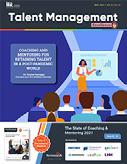
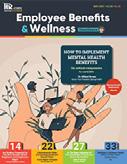


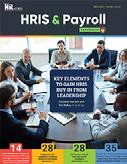
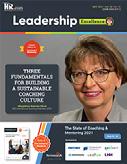
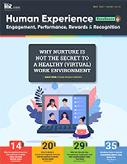
I regularly read and contribute to Leadership Excellence and Talent Management Excellence. I use many of the articles I read to augment my own presentations and I often share the articles with my clients. They are always quick, right on target for the latest issues in my field, and appreciated by my clients. If you want to stay up to date on the latest HR trends, choose a few of the different issues from the Excellence series of publications.


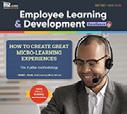
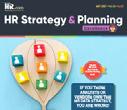
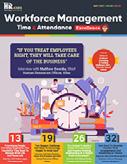
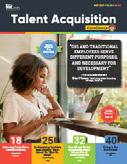
 Dave Ulrich
Rensis Likert Professor, Ross School of Business, University of Michigan Partner, The RBL Group
Julie Winkle Giulioni Author, Virtual /Live Keynote Presenter, Inc.’s Top 100 Leadership Speakers
Dr. Beverly Kaye CEO, BevKaye&Co.
Dave Ulrich
Rensis Likert Professor, Ross School of Business, University of Michigan Partner, The RBL Group
Julie Winkle Giulioni Author, Virtual /Live Keynote Presenter, Inc.’s Top 100 Leadership Speakers
Dr. Beverly Kaye CEO, BevKaye&Co.
WHY EXCELLENCE PUBLICATIONS?
We’re eager to hear your feedback on our magazines. Let us know your thoughts at ePubEditors@hr.com
Three Daily Leadership Habits That Build HighTrust Relationships

Reap the benefits of a high-trust, inclusive culture
By Jennifer Colosimo, FranklinCovey
For over 30 years, my career has focused on building effective teams and inclusive cultures that get results. I’ve found that the most important, foundational element to creating lasting success is building, extending, and restoring trust among teams. When trust isn’t prioritized, it has a significant trickle-down impact on recruitment, retention, productivity, innovation, and eventually, brand reputation.
Here are three proven daily habits that can help leaders create a high-trust culture that retains employees and drives business results.
Daily Leadership Habit #1: Start With Yourself
Often when trust is low in a team or in an organization, leaders tend to place the root cause in an ambiguous place outside of their control such as a missed deadline by an adjacent team, the arrogance of a peer, or a “flavor of the month” initiative that never took hold. But trust flows from the inside out, not the outside in. You can’t control everything impacting trust, but you can place your focus on what you can influence, which includes your personal trustworthiness. And starting with yourself, it has a ripple effect on your team and often your organization.
Personal Excellence presented by HR.com March 2023 6 Submit Your Articles
COVeR ARTICLe
Start with yourself by modeling humility. Are you genuinely looking for the right answer, or are you more concerned with being right? Are you focused on recognizing your teams’ contributions, or are you more concerned with getting credit? I’m embarrassed to admit that I’ve personally experienced the emotion of wanting to “win” an ongoing disagreement with another team. Whether I was right or wrong wasn’t the point. My actions didn’t create trust. I wanted my team to come out on top but didn’t act in the team’s best interest.
Luckily, a mentor had the courage to ask questions about my part in this dysfunctional situation. With demonstrated respect and care for me personally, she encouraged me to address the situation differently, inspiring the team’s confidence and leading to a better result. A high-trust leader has both character and competence, with results as evidence of their competence. How we think and behave to get the results and who we are while getting the results leads to a strong culture of trust.
Daily Leadership Habit #2: extend Trust to Others
Extending trust is not asking a team member to do something, giving them a “you got this!” pep talk, and then abandoning them in the name of the delegation. Extending trust to your direct reports includes clearly defining the desired outcome, the deadline, what resources are available, and what accountability looks like.
Accountability and check-ins around progress will vary, and they tend to depend on risk level. If your propensity is to deem every potential delegation opportunity as high risk and therefore micromanage—or even worse, decide that you might as well do it yourself—you are negatively impacting trust.
When team members feel valued for their contribution and have evidence that you trust them with greater responsibility, they’re more likely to be engaged. The important thing is to match the right amount of risk with the right amount of challenge. That includes encouraging your team to take action, learn new skills, and demonstrate their capabilities. Don’t forget to also be there for coaching, questions, and course correction.
Daily Leadership Habit #3: Listen First
The simplest way to put this habit into action is to measure how much time you spend talking in a meeting compared to your team members and how often you jump in to solve a problem without truly understanding it. When you go too fast, it often means you’ll go much slower in the end.
This is especially true when team members are sharing information that is difficult for them, whether professional or personal. You must become hyper-focused on understanding, not on replying. As an executive coach, I’ve witnessed more than one leader return a text or glance at their watch during a difficult conversation. In other words, they weren’t fully present, continuing the cycle of low trust in their team. Demonstrate respect through your focus. Building trust requires genuine concern and empathy.
To truly cultivate the connection that builds trust, develop the habit of truly understanding another person’s experiences, feelings, and emotions, in addition to the content of the conversation. And remain curious for longer than you usually do before coming in with a response or an answer to the problem at hand.
Starting with yourself, extending trust to others, and listening first are three habits that leaders can practice to build trust. As you develop these leadership habits, you’ll reap the benefits of a high-trust, inclusive culture and stronger business results.
Jennifer Colosimo is the President of Enterprise at FranklinCovey, the most trusted leadership company in the world. In her role, she leads FranklinCovey’s strategic planning, sales, marketing, consulting, customer experience, culture, and revenue operations in more than 160 countries.
Would you like to comment?

Personal Excellence presented by HR.com March 2023 7 Submit Your Articles
Three Daily Leadership Habits That Build High-Trust Relationships
The Importance Of Cheerleaders And Referees In Your Inner Circle
expert tips and insights on building a winning team
 By Jim Stovall, Narrative Television Network
By Jim Stovall, Narrative Television Network
No one succeeds on their own. Success is a “we” endeavor, while failure is a “me” endeavor. You must find talented, engaged, and creative people for the inner circle of your team. They may be employees, partners, or mentors. Hopefully, everyone on your team will be talented though they will not have the same roles.
During a brainstorming or strategy session, some of your team will act as referees. Referees establish boundaries and enforce the logistics and rules of the game. I’ve had some very talented referees on my team throughout the years. As I am thinking about big-picture possibilities, they are evaluating all the details involved in establishing, implementing, and
Personal Excellence presented by HR.com March 2023 8 Submit Your Articles
Top Pick
delivering my latest brainchild. It can be frustrating to have referees in the creative process because, as you reach for the stars, they will keep your feet on the ground.
If your referees are creating too much burnout in your brainstorming process, you should have your latest idea fully fleshed out before you run it by your referees. While they can create some burnout during the idea phase, they are invaluable as you launch into new and exciting directions.
Cheerleaders are the opposite of referees. It’s easy to tell the difference when you watch a game at the stadium or on television. While referees are blowing whistles and throwing flags to stop or limit the activities, cheerleaders call for the players to run faster, jump higher, and win the game.
Within the inner circle of your mastermind team, you will want to have your share of cheerleaders. They will be excited about every new idea and concept regardless of the cost or logistical challenges. Cheerleaders see the upside in any proposal without fully acknowledging the downside. It is a rare individual, indeed, that can function both as a referee and a cheerleader.

As in most things, the best wisdom comes from a multitude of sources representing all sides of
the issue. In the courtroom, truth and justice are best served when the opposing sides each have an opportunity to state their case and cross-examine the opposition. This exchange will be true of your referees and cheerleaders. Before you fully implement any new project, idea, or proposal, your referees, in addition to working out the details and logistics, should acknowledge and embrace the potential of your new endeavor. On the other hand, your cheerleaders should both understand and accept the logistical challenges laid out by your referees.
As you go through your day today, fully utilize your cheerleaders and referees.
Jim Stovall

is the
President of
the Emmy-award-winning Narrative Television Network as well as a published author of more than 50 books—eight of which have been turned into movies. He is also a highly sought-after platform speaker. Would
Personal Excellence presented by HR.com March 2023 9 Submit Your Articles The Importance Of Cheerleaders And Referees In Your Inner Circle
you like to comment?
unpacking The Monday Blues: Motivation And Productivity At Work
The influence of different days on productivity and the emotions they evoke
By Nina Paczka, Zety
Monday, the first day of every workweek, arouses extreme emotions. The mere thought of it leaves us feeling groggy, unmotivated, and overwhelmed by the endless list of tasks that lay ahead. But at the end of the rainbow are Fridays, the best workweek day that conjures up visions of a blissful weekend filled with leisure and fun.
Have you ever wondered if Mondays truly deserve their notorious reputation as the worst day of the week? Or are Fridays really as awesome as we tend to believe? And what about the other workdays? Are they
secretly the key to optimal productivity and emotional well-being?

In this article, we explore the truth about Mondays and the broader emotional landscape of the working week. Drawing on recent research by Zety, we uncover surprising findings about the ups and downs of different days, productivity levels, and motivation.
The Worst Days of the Workweek
Not all days were created equal. As much as we try to shake off the “Monday Blues,” a significant portion of
Personal Excellence presented by HR.com March 2023 10 Submit Your Articles
people still feel a certain degree of reluctance toward the start of the workweek. In fact, according to a recent study, 41% of participants chose Monday as the day they dislike the most in the working week.

Then, the next most hated days are:
● Wednesday (20%),
● Tuesday (16%),
● Friday (13%),
● Thursday (10%).
But there is more evil hidden on Mondays. 8 in 10 respondents (80%) say these days are the most stressful throughout the workweek. This is due to task-related issues such as heavy workload or expecting to work overtime but also work atmosphere, including:
● high-pressure work environment,
● workplace bullying,
● discrimination, or unequal treatment.
But one more secret ingredient contributing to increased stress is “Sunday scaries.” Monday syndrome or Sunday scaries are terms used to describe negative emotions that individuals experience at the end of the weekend or the start of a new week.
Most employees (92%) have experienced stress when Mondays come, with 54% reporting it sometimes happens, 20% saying it’s rare, 10% admitting it often happens, and 8% experiencing it every week.
Sunday scaries are most common among the self-employed (19% say they’re always stressed when Mondays come), those working in business and finance (18%), and employees earning $75,000 or more (17%), but also Generation Z with 98% of respondents aged younger than 25 experiencing pre-Monday anxiety.
Bad Days Are unavoidable
In addition to the most hated days of the week, employees also have to face other bad days when the whole day turns out to be a disaster. And bad days at work are inevitable, with 65% of people experiencing them at least once a week.
The days when things most often don’t go our way are Wednesday, with 30% of respondents indicating it as their bad day, followed by Monday (25%), Tuesday (24%), Thursday (13%), and Friday (8%).
While work-related factors are the main cause of bad days (50%), external personal factors contribute 42%.
Cracking the Code of Workweek Productivity
More than 9 in 10 respondents (95%) experience changing productivity levels across the workweek.
Personal Excellence presented by HR.com March 2023 11 Submit Your Articles Unpacking The Monday Blues: Motivation And Productivity At Work
This variability can be attributed to various factors such as workload, task complexity, personal life events, and even personal mood or attitude.
Still, some days appear to be more productive than others.
About a third of the survey respondents (33%) claim that Wednesday is the most productive day for them, mainly when there’s a heavy workload or approaching deadlines, which motivates them to finish their tasks quickly. Monday (22%) is ranked second, followed by Tuesday (17%), Thursday (15%), and Friday (12%).
On the other hand, Friday is considered the least productive day by more than 2 in 5 respondents. And it’s not surprising as Friday is the day that kicks off our weekend and puts work to bed.
The research also gave the participants a range of hours and asked them to indicate when they typically are the most productive. The results showed that most workers (51%) feel most productive during the last four working hours, from 1:00 to 5:00 pm.
The first four hours of the day (9:00 am to 1:00 pm) are the most productive time for 43%, while the smallest percentage of workers (6%) felt the most effective during the midday hours of 11:00 am to 3:00 pm.
This breakdown is vital as it allows for work planning according to productivity levels, and this is what’s actually done by almost all respondents (97%).
Potential Benefits of a Shorter Work Week
While 85% support a 4-day workweek, 53% believe the current 5 days and 40 hours are insufficient for completing necessary tasks. This often leads to employees working overtime or feeling overwhelmed by their workload.
However, 81% of respondents believe a 4-day workweek would increase their productivity and motivation.
In addition, researchers have compiled a comprehensive list of alternative work schedules, and surprisingly, the current working system with a slight modification is the preferred option based on the results. The most attractive work schedule for employees is 5 days per week at 7 hours per day (35 hours total). This was the choice of 49% of respondents.
Moreover:
● 27% preferred the traditional 5-day, 8-hour week (40 hours total),
● 18% chose a 4-day, 8-hour week (32 hours total),
● 5% preferred a 4-day, 10-hour week (40 hours total).
This data suggests that employees are more motivated and productive when they work fewer hours daily, Monday to Friday, as it allows for handling all professional duties while improving productivity and work-life balance by reducing one hour per day. On the other hand, the least popular option is working 10 hours daily for 4 days, which decreases motivation and productivity while increasing mental fatigue.
To summarize, 8 out of 10 respondents agreed that working 6 or 7 hours per day instead of 8 would increase their commitment and motivation to work.
Nina Paczka is a career advisor and job search expert at Zety. She offers professional expertise to everyone wanting to gain insight into the job market. Her professional advice and guidance help people find a satisfying job and pursue a career. Nina’s mission is to support jobseekers in their path leading to finding a perfect job.
Would you like to comment?

Personal Excellence presented by HR.com March 2023 12 Submit Your Articles
Unpacking The Monday Blues: Motivation And Productivity At Work
4 Daily Practices To Nurture Yourself And Your Team

Organic mentorship is the ideal goal
By Roberta Hughes, PeaceFull Living
Onemistake that leaders make in trying to empower women in the workforce is spending budgets on events and experiences hoping to create meaningful connections among their teams. However, research suggests that what women in the workforce really want is to have a voice, build relationships, and receive mentorship. This is good news! Instead of spending time and money on events and experiences,
leaders can now shift their focus to fostering a nurturing environment that builds relationships and overall empowers women by meeting the needs they hope to have fulfilled.
What Is a Nurturing environment?
A nurturing environment sets a foundation for all team members to feel seen, heard and understood. It
Personal Excellence presented by HR.com March 2023 13 Submit Your Articles
Top Pick
also allows for empathy and emotional safety to be present. A nurturing environment creates the space for women in the workforce to be more optimistic and productive rather than feel overworked and overwhelmed.
Employees who feel nurtured are emboldened to:
● communicate openly and effectively
● set healthy boundaries
● be less reactive
● respect the boundaries set by leaders and other team members
● work more efficiently and meet deadlines
● display greater creativity
● contribute enthusiastically
● participate in team goals and deadlines
● feel empowered to make decisions
● act boldly
What Leaders Can Do to Create a Nurturing environment
As a leader, consider what is needed to nurture your team members (and yourself). How can you establish an environment that fosters teams that feel nurtured

and carry forth some of the characteristics we outlined above?
Try these four simple practices to create a nurturing work environment for yourself and your team:
1. Develop a gratitude Practice with Your Team Members

Whether you have a weekly one-on-one with each member of your team or a weekly team meeting, it can be easy to introduce a gratitude culture at work. Use the first five minutes of each meeting to share a quote or short video about gratitude. Keep it to 1-2 minutes. Use the remaining 4-5 minutes to open the floor to share about gratitude. Invite team members to come to the meeting prepared to share at least one thing they are grateful for, or how they are grateful for another member of the team. Be sure to include yourself in sharing.
2. Celebrate the Big and Small Wins
Ask your team members to prepare three wins and bring them to your weekly meeting. Wins can be both work-related and personal. As wins become part of your work culture, team members will get to know each other on a more personal level. Over time, working relationships will grow stronger and team members will support each other without being asked to do so.
Personal Excellence presented by HR.com March 2023 14 Submit Your Articles 4 Daily Practices To Nurture Yourself And Your Team
3. Lead with Acknowledgment
As a leader, it is important to offer feedback that is honest and helpful. There will likely be times when you need to share negative feedback. Rather than leading with the things that need to be improved or changed, begin with acknowledging the work that is meeting or exceeding expectations. When you acknowledge the good parts, team members are better able to listen and receive constructive feedback.
4. Set Clear and Healthy Boundaries
Healthy boundaries create a feeling of safety and security. When your team knows what to expect, they are better able to relax and do their work. When your work environment is filled with uncertainty, team members are more likely to be stressed and overwhelmed. Be sure to set and communicate expectations clearly for each team member.
After you have incorporated these four simple practices, practice what you preach by keeping a leader journal that is for your eyes only. This will be a point of reference for you to notate where your team has grown and where you can continue growth strategies.
Use these simple prompts in your journal:
● Write down who has taken initiative to share.
● Notice which team members feel open to sharing.
● Create ways to encourage sharing from those who are more reticent.

● Place healthy boundaries for sharing so the same team members aren’t always first to share.
● Notate opportunities to offer each team member time to be heard.
● Review the list of characteristics that employees display when they feel nurtured. Is there anyone on your team who seems less emboldened? What steps can you take as their leader and mentor to help them grow in these areas?
By implementing these practices, you will notice incremental shifts in your team – people will start

speaking up more, relationships will further develop, and opportunities for mentorship will become organic. Organic mentorship is the ideal goal because it results in a stronger, more impactful team overall.
When executing these daily practices, remember to consider yourself. Many will be looking to you for guidance, strategy, and mentorship, but who is looking after you? Who is mentoring you? It’s vital that as leaders we remember that we also need to grow and advance. Have someone in your midst as a trusted resource who will listen to your ideas, encourage you, and even critique your leadership style. Constructive feedback will cause you to reflect and consider their advice for future decision-making.
Peaceful living expert, Roberta Hughes works with companies and individuals to implement daily progress practices. Roberta walks alongside clients, individuals, and businesses to implement daily routines including gratitude, meditation, and self-awareness practices that aid in developing a stronger EQ and easing the weight of what we are carrying, both mentally and physically. She is the Founder and Self Care Expert at PeaceFull Living, a boutique hybrid studio that conveys a delicate and personalized approach to corporate wellness through customized Pilates.
Would you like to comment?

Personal Excellence presented by HR.com March 2023 15 Submit Your Articles
4 Daily Practices To Nurture Yourself And Your Team
How Can Women Wield More Personal Agency In The Workplace
Creating empowering work environments for women
By Samreen McGregor, Turmeric Group
Personal agency is the belief in our capacity to act in (and have a sense of control over) a situation. In theory, if you have the mindset that you can make a difference in your surrounding conditions and outcomes, you will be more motivated and incentivized to face the situation.
Across countries and industries, despite some progress, women are still significantly underrepresented in leadership roles. According to McKinsey’s Women in the Workplace 2022 report, one of the biggest obstacles on the way to senior leadership is the first promotion to manager, leaving many struggling to catch up with men.

At the same time, women are leaving companies at a faster rate than ever before, due to feeling overworked and under-recognized, experiencing resistance to progression and seeking but failing to find a more suitable workplace culture. Given these trends, it has never been more important for women to take a stand and wield more personal agency in life, both professionally as well as personally.
Has the Pandemic Awakened Agency in More of us?
The human race is becoming more demanding. We expect more. The pandemic has given people
Personal Excellence presented by HR.com March 2023 16 Submit Your Articles
a wake-up call and many are striving for more purposeful lives. This may be part of a new phase in which people’s purposes become an equal force to profit and material reward. This is an encouraging development for society.
In the October to December quarter of 2021, the number of job vacancies in the UK rose to a record high of 1,247,000. This represented an increase of 462,000 from its pre-COVID level in January to March 2020, with most industries displaying record numbers of vacancies. From October to December 2021, the UK also reached a record ratio of 4.1 vacancies to every 100 jobs.
According to Rani Molla writing in Vox, ‘Higher-paid workers are increasingly quitting their jobs, as the Great Resignation – also known as the Great Reshuffle – enters its second year.’ The demographic of those leaving organizations is changing from lower-paid industries like health and retail to more experienced and higher-paid industries like finance and tech. Company culture is no longer merely a ‘nice-to-have’ for the good, passionate, and capable people organizations want to attract. It is a core criterion that employees use to judge opportunities along with salary, benefits, and location. A desire for
more meaning associated with the work people does and flexibility to work remotely are being prioritized.

Seeking environments that Suit You
Currently, retaining talent is a tough challenge for many businesses. People are actively seeking and finding environments where their values, needs, and ability to work and contribute without compromise are palpable. Employment opportunities are at record levels.

People question whether the work they do is meaningful if their skills are being used if they feel valued and whether their contribution is recognized. They ask themselves the following questions:
1. Why am I doing this?
2. What purpose does it serve for me and those around me?
3. How can my environment help me do better work? Help me to thrive?
4. What are the consequences of working in a toxic environment?
The answers to these questions are causing a growing number of people to lose faith in their leadership and to leave their jobs and organizations. This is having a disproportionate impact on competition for the best talent and the power is seemingly shifting in a way that is influenced by personal choices.
People are becoming empowered to take matters into their own hands to such an extent that the goals of financial performance and meeting the needs of employees now share paramountcy. In the spotlight are critical factors such as people feeling an affinity with their organization’s purpose and vision, the ingredients for more collaboration and fewer territorial silos, an equitable workforce that demonstrates gender equality (through representation in numbers at all levels and supporting policies) and an organizational environment that proactively nurtures people’s good health and wellbeing.
There are various ways women can wield more personal agency in the workplace. They include:
Personal Excellence presented by HR.com March 2023 17 Submit Your Articles
How Can Women Wield More Personal Agency In The Workplace
Question Inconsistencies Between Personal and Working Life
Often, experiences of stress or difficulty in the workplace originate from when an individual’s identity or self-concept is rocked by factors in the surrounding environment that is at odds with them. What businesses and organizations espouse and the reality that employees and leaders experience diverge in many contexts. Women should be encouraged or take initiative to question these inconsistencies and no longer compromise their values, not be afraid to rock the boat or stand out.
Create Safe Working Spaces
We live in a society where intrinsic drivers for personal ambition infuse organizational vision, where personal security and hygiene factors remain necessary conditions for life, and where unrelenting ambiguity and change are the only consistent conditions. These conditions and realities drive our people’s autonomic nervous system to default to a ‘fight or flight’, high-alert state.
Creating an environment that counteracts and disrupts our learned and automated responses are critical to counterbalancing this force. A safe space is a vital requirement for individuals, organizational life, and our day-to-day reality in teams. Teams can interact and work using more balanced, rest and reflect-oriented patterns rather than the ‘firefighting’ common to many organizations. In a pandemic and post-pandemic world, the fully virtual and hybrid versions of working life add complexities to how we interact. We must adapt to a new way of working beside the firefighting we have normalized as part of the team and organizational life.
evaluate Your Priorities
There are choices that women can make about their own lives which will also heighten their sense of control and agency. For example, making sure you get enough sleep, regular exercise, spending time in nature and mindfulness such as meditation can help balance stress. As well as this, the availability of methods for individuals to track and measure their health – from steps to calories to heart rate patterns – gives people the impetus to keep active.
To practice wielding more agency, women can assess their own priorities and need with these questions:
1. What are the values I commit to and live by?
2. What role does the surrounding environment play in supporting me?
3. Do I prioritize my family and relationships?
4. What I am no longer prepared to give up or compromise, especially relating to my self-identity?
5. Why is it important to take action to safeguard my health?
6. What are my passions, and why are they worth investing in?

7. How can I be kind and compassionate but also aware of the impact of my words and actions on others?
The process of wielding more personal agency is a combination of conscious actions taken to improve external circumstances in a way that women know will eliminate or reduce the undesirable effects of the adversities they traverse, and ongoing selfreflection practice. As well as learning to assert themselves more and prioritize their own values, the personal agency also requires an acceptance that the challenges they face are real and valid, the determination to not become discouraged and the motivation to also invest in themselves.
Samreen McGregor is an executive coach, founder of Turmeric Group, and the author of Leader Awakened.
Would you like to comment?

Personal Excellence presented by HR.com March 2023 18 Submit Your Articles
How Can Women Wield More Personal Agency In The Workplace
Leading With Compassion Is Key To Lasting Impact
What I’ve learned about leadership, empowering other women, and finding your voice
By Tammy Elliott, The Los Angeles Film School
When studying leaders of influence, there are several attributes that most agree that are associated with those who make a positive impact. Integrity. Self-awareness. Communication skills. Yet, there is an often-overlooked characteristic that some of the most successful leaders exhibit: compassion.
Leadership and compassion are wonderful partners. It is possible and reasonable to care for the organization and each other at the same time. I have witnessed leadership without compassion and, although the team was able to produce results, we did so under negative criticisms and emotional stress. This
inevitably leaves a trail of collateral damage within the organization, teams, and individuals. But fear tactics and results aren’t mutually exclusive. Teams can produce results while being supportive and respectful of each other. When we work with humans and for humans at every turn, why wouldn’t we want to leverage our brains and our hearts?
Leading with Human-Focused Compassion
At times, finding harmony between running an organization and truly caring for the individuals that make up the organization, can be a challenge. We

Personal Excellence presented by HR.com March 2023 19 Submit Your Articles
Top Pick
need to remind ourselves, as leaders, that there is an ever-present human component to accomplishing our mission. It is easy to get caught up in the daily tasks, the metrics, and the looming deadlines, but it is crucial that leaders remember our employees are the heartbeat of the organization. Find meaningful touchpoints that will not only elevate the mission of the organization, but uplift individuals along the way and embody human-focused compassion.

While many industries are embracing the concept of human-centric leadership, it’s not a quick and easy turn. It is a long road. It requires patience, thoughtfulness, fortitude, resilience, and clarity. And the long road forces us to recognize that life and work are not about striving for perfection, but rather striving for excellence and connection along the way.
I’m the first to admit that I’m a mere mortal who makes mistakes. Having compassion for others is simply recognizing we’re more similar than we are different. As a leader, acknowledging our shortcomings and remaining open to learning from each other creates a win-win. The connections that we make while successfully completing our responsibilities will inherently create confidence and trust within the individuals and, in turn, create a stronger and resilient team.
Why is all of this important? Because, for those of us in education, our mission is to not only provide an excellent learning experience for our students, but to also care about our students and each other. We all experience adversity, challenges, hardship and, sometimes, just a really bad day. It is the grace toward each other and faith in one another that fuels us to find our best, against all odds.
using Human-Focused Compassion to empower Others
During my time in the workforce, I have witnessed many extremely talented individuals go unnoticed, unheard, and unseen; often women.
I know what it’s like to be a mom while maintaining a career. I know how it feels to watch someone take credit for my contribution. I know how afraid I felt when deciding whether or not to add to the conversation. I know how frustrating it is to be repeatedly interrupted. I understand the difficulty of balancing work and home life, and I bring all of this experience to work each day. It gives me perspective and compassion for those in similar seasons of life. Now, 30 years later, my leadership position affords me the opportunity to provide space for women to speak without interruption, to have an equal seat at the table, and to have their voices heard in a safe, respectful environment.
Personal Excellence presented by HR.com March 2023 20 Submit Your Articles Leading With Compassion Is Key To Lasting Impact
It is a wonderful and inspiring moment to realize that you can join the conversation without being domineering. You can be kind and compassionate while also being strong, clear and respectful. For women looking to embrace their compassion while developing into leaders, I encourage them to:
1. Listen: Listen with your ears and your heart. I never learn anything when I’m talking.
2. Approach conflict with curiosity: Not many of us enjoy conflict, but we can use the opportunity to seek understanding. Instead of approaching conflict with set determination, try being curious. Pause to ask clarifying questions. Often, I will learn more than I knew at the start. And, with the new information, we may be able to find a compromise. Understanding each other is the path to reaching a shared resolution.
3. Trust yourself and know your limitations: Know when you have something valuable to contribute and say it! Also know when you aren’t the expert and join forces with someone who is. It’s okay not to know everything. And you will inspire others when they realize that we all are mere mortals trying to do a good thing.
4. Go easy on yourself: As women, we are so hard on ourselves. Give yourself a break when you make a mistake. Think about your truest friend and the lengths that you will go to lift them up when they are down. Now, think about yourself. You are worth the same measure of understanding, care and support that you provide others.
Leaving a Lasting Impact
When looking through the lens of how much impact one person can make, sometimes the circumstances feel so large that anything offered would land as insignificant. We spend a lot of time working, so that we can celebrate the finish. Please don’t misunderstand. I’m all about a champagne toast. In my opinion though, lasting impact does not suddenly appear at the “wrap party” nor at the yearly celebration for milestones met. The lasting
impact is tenderly and carefully planted in each step, hundreds if not thousands of steps found “in between” the start and the finish.
Each day on this long road, we are given so many opportunities to genuinely connect with another person; in the elevator, the hallway, the board room, the classroom, the grocery store, the parking lot, or even the meeting that you would rather not attend.
To the best of my ability, I choose to take those steps with kindness, compassion and care; one-to-one and step-by-step.
Tammy Elliott joined The Los Angeles Film School (LAFS) as President in 2019. Shortly after, the Covid-19 Pandemic hit, and she and her extraordinary team’s priority shifted to introducing a more robust institutional education strategy, which improved the quality of remote learning and increased hybrid and online program options. During her 30+ years in higher education, she has developed a model of service that is rooted in earnest relationship building. Previously, Ms. Elliott was a singer/songwriter, which deepens her appreciation for the talented students and faculty at The Los Angeles Film School.
Would you like to comment?

Personal Excellence presented by HR.com March 2023 21 Submit Your Articles
Leading With Compassion Is Key To Lasting Impact
HRCI® & SHRM® CERTIFICATION PREP COURSES
GROUP RATES AVAILABLE
For HR Professionals
Show that management values the importance of the HR function, and has a commitment to development and improvement of HR staff.
Ensure that each person in your HR department has a standard and consistent understanding of policies, procedures, and regulations.
Place your HR team in a certification program as a rewarding team building achievement.
For Your Organization
Certified HR professionals help companies avoid risk by understanding compliance, laws, and regulations to properly manage your workforce.
HR Professionals lead employee engagement and development programs saving the company money through lower turnover and greater productivity and engagement.
A skilled HR professional can track important KPIs for the organization to make a major impact on strategic decisions and objectives, including: succession planning, staffing, and forecasting.
HR.com/prepcourse CALL TODAY TO FIND OUT MORE 1.877.472.6648 ext. 3 | sales@hr.com
1 Less expensive than a masters or PhD program, and very manageable to prepare with
2. legislation and best practices
3. Recognized, Industry benchmark, held by 500,000+ HR Professionals
Group Rate Options
We offer group rates for teams of 5+ or more for our regularly scheduled PHR/SPHR/ SHRM or aPHR courses.
For groups of 12+, we can design a more customized experience that meets your overall length of the course.
Groups rates for HRCI exams are also available as an add-on.
All group purchases come with 1 year of HR Prime membership for each attendee to gain the tools and updates needed to stay informed and compliant

CALL TODAY TO FIND OUT MORE 1.877.472.6648 ext. 3 | sales@hr.com | HR.com/prepcourse
1 2 3
5 essential Steps For Company Presidents To Navigate A Crisis Successfully
It is important to have a crisis management plan prepared in advance
By Shiela Mie Legaspi, Cyberbacker
When companies face a crisis, the president of the organization has a vital responsibility to mitigate the damage and steer the team through it successfully. This involves skilled communication, expert management, and a willingness to embrace change.

No matter what the cause of the crisis — be it a natural disaster, political upheaval, or even poor customer service — it’s important to know how to
respond. Below, I explain the five steps presidents should take whenever a company crisis happens.
Tip #1: Manage Your Own Mental State
By definition, crises are unexpected negative events, so it’s normal to react with dismay or other difficult emotions when you first learn what happened. As the organization’s leader, however, it is important to process these emotions effectively. Toward this end, emotionally intelligent leaders cultivate the skill of self-management.
Personal Excellence presented by HR.com March 2023 24 Submit Your Articles
As a Harvard Business School article explains, “A reaction tends to be automatic. The more in tune you are with your emotional intelligence, however, the easier you can make the transition from reaction to response. It’s important to remember to pause, breathe, collect yourself, and do whatever it takes to manage your emotions—whether that means taking a walk or calling a friend—so that you can more appropriately and intentionally respond to stress and adversity.”
By accepting your emotions, you will be able to process them quickly and efficiently, which will return you to a state of calm and enable you to engage in higher-order thinking. Doing this will also help you refrain from overreacting or making hasty decisions that could exacerbate the situation.
Keep in mind that leaders’ emotions are contagious and help set the mood for the whole team. By projecting calm yourself, others around you will likely stay calm as well. Simply by taking proper care of your own mental state, therefore, you can help the whole team focus on getting through the issue at hand. This approach also creates a stable, safe environment in which people feel free to bring up any concerns that arise along the way.
Tip #2: Investigate
The next step is to get the facts. You will need to determine what happened, how, and why. This will help you understand if systemic issues are at play or if this was simply an isolated incident.
To get these facts, ask for a report from the person who was in charge of the situation and anyone else involved with it. If someone did not report something earlier that they otherwise should have, this may be an indication that more is going on than meets the eye, warranting further investigation.
In addition, ask for any documentation that is related to the situation. This could include emails, customer complaints, or reports from other employees.
As the situation progresses and more information is known, you will become increasingly able to take control of the situation. While doing this, be clear about what you are doing, what you won’t do, what you need from others, and what you will do if the situation doesn’t improve.
Tip #3: Honest, Transparent Internal Communications
For best results, leaders should be honest and transparent with their internal teams. When

Personal Excellence presented by HR.com March 2023 25 Submit Your Articles
5 Essential Steps For Company Presidents To Navigate A Crisis Successfully
unforeseen obstacles arise, I involve everyone in the company, explaining what’s going on and asking for their help. Having everyone give suggestions and participate in the solution is much more effective than burdening a single division.
For instance, we once had issues with our payment gateway’s service fees. We were very, very transparent with our staff about what was going on between our bank, the company, and the payment gateway. We asked them to help us call that payment gateway to raise awareness that our company was experiencing issues and needed help. As a result, thousands of our people called the payment gateway. Just a few hours after we did that, the payment gateway deposited our funds in our account. Enlisting the help of the entire team helped us solve the problem quicker than if only the ten people in our finance division would have worked on it.
Tip #4: Stay Positive
In a crisis, skillful leaders refrain from placing blame on their subordinates. Yes, there are people involved who may have played a role in leading up to your current predicament — most likely your employees or managers. As tempting as it might be, however, try not to place blame on anyone else, even if they deserve it.
Instead, focus on what happened and how the team can learn from these mistakes moving forward so they won’t happen again. Communicate this directly with employees so they know what actions are being taken internally to prevent future errors from occurring again.
In addition, provide your employees with reassurance that you see their value as part of your team and recognize them as individuals with unique perspectives. Those who may have made mistakes will need this reassurance most.
Finally, focus your team’s attention on your vision for the company’s future. Remind your workers that, despite current problems, the enterprise’s initial motivation and current goals remain the same. Reaffirm your commitment, assure them that these challenges will be successfully overcome, and
praise them for helping each other get through the difficulties together.
Tip #5: Have a Plan
The first time your company has a crisis, you might not already have a crisis management plan in place. If so, let this be one of the major things you learn from it: always have a crisis management plan ready to go, just in case.

While crises might be unexpected, planning for them shouldn’t be. Companies that have a plan in place for dealing with crises are better able to mitigate their impact.
Every crisis management plan should create a crisis management team, the membership of which should be determined in advance. These bodies provide support in key areas such as communication, public relations, and legal counsel during a crisis situation. The key is to develop a plan and stick to it so that during times of stress, you will be more able to focus on solving problems rather than reacting to them.
By following these steps, presidents can manage company crises as gracefully and beneficially as possible. While these times will never be easy, they can be overcome, and presidents can use them to make their businesses stronger than ever.
Would you like to comment?
Personal Excellence presented by HR.com March 2023 26 Submit Your Articles
Shiela-Mie Empleo Legaspi is the President of Cyberbacker, the leading provider of world-class administrative support and virtual assistant services from anywhere in the world to anyone in the world.
5 Essential Steps For Company Presidents To Navigate A Crisis Successfully
Improving Managerial Health: Tips For Better Self-Care
A stressed boss stresses their team
By Lacey Leone McLaughlin, LLM Consulting Group, Inc
Right now, everyone’s jobs are hard. I could say that managers’ jobs are even harder because they have to look out for their team members’ mental health and their own.
It’s easy to dismiss managers’ problems. (After all, they are the boss!) But in today’s environment, all team members deserve empathy, including leaders, as

they are navigating immense changes in the workplace. Covid-19 has caused a permanent shift in how organizations operate, we’re entering a down economy, and both leaders and teams are navigating social issues. For many in their careers, it’s never been more stressful to lead.
As an executive coach, I help leaders do their best work.
I am not a psychologist, but from my personal experience coaching leaders, I have seen the importance of wellness and mental health. I prioritize this in my coaching. Regardless of industry, when I’m meeting a leader, the first question I ask is, “How is your team, and how are you?” I’m asking because I care and want to know, but also because their well-being is pivotal
Personal Excellence presented by HR.com March 2023 27 Submit Your Articles
Top Pick
to their success. You can’t expect a leader to be present, empathetic, and resilient if they’re not taking care of themselves. It’s why flight attendants tell you to secure your oxygen mask before helping those around you: If you can’t help yourself, you can’t support your teams and others.
There are numerous ways leaders can proactively take care of their mental health. First, leaders need to carve out time for themselves. Whether they use the time to work out, read, or plan, they need to hold the time sacred and be intentional about how they use it. There are only so many hours in a day, and when you’re a manager, time is even more precious. Leaders need to treat their personal time as sacrosanct.
If you’re going to carve out time for yourself, you need to set precise hours when you’re unavailable. You need to vocalize the schedule to your team, and you need to stick by it. During your time, you need to refrain from checking emails, texting, or reviewing documents. Focus on the things that will allow you to be your best, whatever that looks like for you!
If you can’t resist the temptation, turn your phone off and lock it in a phone lock box. Thanks to their built-in times, these secure boxes lock your phone away for a set time. They can help even the most anxious executive disconnect.
need a mental health break. When I get stressed, my shoulders go to my ears. The second I feel my shoulders hit my ears, I know I need to step away for an hour and reflect, plan, or decompress. Managers should consider how their body signals that they need a wellness check. Pay attention to cues and then deliberately respond to them.
Leaders who struggle to manage their stress should use the resources organizations provide. Decades ago, corporations wouldn’t even think of offering wellness programs. Today, companies provide more wellness benefits than ever before. They offer gyms, therapists, and more. Use the benefits. Don’t be afraid to ask for help. Don’t be scared to be honest. If you’re struggling with a part of the job, find out and use the resources available.
creates a healthy workplace, and a healthy workplace stimulates business success.
Many leaders struggle to take care of themselves, but in recent months, I’ve been happy to see managers prioritize their mental health. During the holidays, I received few emails or texts from leaders. They were taking the holidays to heart and spending them away from work. They set boundaries, and they respected them.

To staff, leaders’ mental health may seem inconsequential. But for a leader to succeed, we all need to understand the challenges leaders face, and leaders need to give themselves grace and allot time for wellness. It’s hard to lead. So take care of yourself.
Next, leaders must understand physical cues that signal they
We all need to take care of ourselves, but managers must be aware of how their bad days trickle down to others throughout the organization. Everyone knows a stressed boss stresses their team. Even worse, employees may mirror their managers’ behaviors. Few leaders can be their best when they are not taking care of their own health; we can’t expect to make our best decision and drive impact when not at our best. Leaders are more capable of problem-solving when they’re centered. They miss fewer issues among their team and can proactively look for solutions rather than being a reactive firefighter. A healthy boss
Personal Excellence presented by HR.com March 2023 28 Submit Your Articles
Improving Managerial Health: Tips For Better Self-Care
Lacey Leone McLaughlin is the President of LLM Consulting Group, Inc. Coaching leaders across all industries, she specializes in teaching management skills to creative talent within entertainment, and has worked across studios and production companies.
Would you like to comment?
Why Our DecisionMaking Is Influenced By Our Personality And emotions
By Scott Allender, The Evolving Leader Podcast
“We are raised believing that reasonable discourse can establish the superiority of one line of thought over another. The underlying presumption is that each of us has an innate faculty of reason that can overcome our perceptual differences and see a problem from the ‘optimal perspective’.”
– Dr. Robert A. Burton
If you ever find yourself in the unfortunate circumstance of appearing before a judge in a courtroom, pray the judge has had a good night’s sleep and a recent meal. A 2011 study revealed that Israeli Judges hearing parole cases granted 65 percent of requests at the beginning of the day. As the day went on, however, they granted fewer and fewer paroles, until they had a snack break, where the approvals would return to an average of 65 percent.1
Thankfully, most of us won’t find ourselves with our very freedom dependent upon another human being’s
eating schedule, but the point here is simply this: When making a decision – any decision – logic and objective reasoning play a far lesser role than how we are feeling. What’s more, even when our bodies are fully resourced – we’ve had our 8 hours of shut-eye, have been exercising regularly, and had our mid-morning apple – we still can’t rely on our objectivity or reasoning when faced with important decisions. This is because we do not see things as they actually are, but only as they are, or were, useful for us to see.
Personal Excellence presented by HR.com March 2023 29 Submit Your Articles
Emotions aren’t something to simply be ‘managed, they must be understood
According to perceptual neuroscientist Beau Lotto, “in terms of the sheer number of neural connections, just 10 percent of the information our brains use to see comes from our eyes”2. This means that the other 90 percent is our brains trying to make sense of things through the interplay of the physical signals from our bodies and our current emotional state including, but not limited to, our moods, which are constantly being filtered through our own biased belief systems and past experiences. In other words, none of us perceive objective reality, so why do we think we are rational decision-makers?
Frames Aren’t Facts
The frames we use to view the world are biased and limited, developed largely as a response to the stories we grew up in, our temperament, epigenetics, our relationships, and compounded by the stressors of living in a rapidly changing and increasingly unpredictable world. As I write about in my book, The Enneagram of Emotional Intelligence, the enneagram is a system which explains how we see the world from one of 9 primary personality archetypes. Each of these archetypes has its own unique frames from which it takes in information and makes decisions. These frames are subjective mechanisms from which we try and make sense of the world and overcome and navigate our respective fears, desires, and wounds that gives our personalities their substance. Regardless of which one of these 9 archetypes we most relate to, each of us has deluded ourselves into thinking that they we are seeing things clearly (at least
most of the time) and that we are making rational, objectively informed decisions in our day-to-day lives.
Of course, on occasion, each of us makes a hasty decision, fueled by an oversized emotion or unmet need that we eventually regret. In response, we may then over-correct; studying up on strategies for “managing” those pesky feelings to avoid stepping into these emotional pitfalls, so that we don’t wind up sending the proverbial prisoner back to jail just because we are feeling cranky.

But emotions aren’t something to simply be ‘managed” – they must instead be understood. Our feelings aren’t formed to work against us – it is only the lack of understanding of our feelings that works against us. It is when our feelings are repressed, denied, or weaponized that we succumb to potentially harmful and regrettable decisions. However, when we tend to our emotions with non-judgmental curiosity, we begin to understand what our feelings are communicating to us, thereby helping us to better understand the problem we are trying to solve.
Personality-Based Decision Making
The 9 personality archetypes depicted in the enneagram framework are organized within 3 dominant intelligence centers. Enneagram Types 8, 9, and 1 are part of what’s called the “Body” types. These types are more “hands-on” and tactile than the other types. They seek to experience life through their senses. They tend to be very concerned with
Personal Excellence presented by HR.com March 2023 30 Submit Your Articles
Why Our Decision-Making Is Influenced By Our Personality And Emotions
matters of right versus wrong and are motivated to fix injustices in the world fueled by an often-unconscious anger about a world that is often unfair.
Enneagram Types 2, 3, and 4 are part of the “Heart” center. These types understand the world first and foremost through their emotions. They tend to be highly relational and are the most image-conscious of the personality types. The often-unconscious emotion sitting right below the surface for Heart types is sadness, which originates, in part, from a sense of living at a distance from their most authentic selves, always performing, in one way or another, for the validation of others to compensate for a lack of healthy mirroring as a young person.
Finally, Enneagram Types 5, 6, and 7 are known as the “Head types”. These types try to make sense of the world through thinking and logic. They tend to be “in their heads” much of the time, often planning and using their imaginations. The often-unconscious emotion sitting right below the surface for these thinking types is fear, which stems from wanting to be certain about things. While we all covet a sense of certainty, these personality types feel more fear than other types over what they cannot predict.
You don’t have to know anything else about the enneagram to appreciate what this framework reveals to us about the inherent bias each of us brings to decision-making, favoring either our gut instincts (the body), our emotions (the heart), or our rational processing (the head), and under-utilizing the other 2, less natural, forms of intelligence. What’s more, distinct in each one of these 9 personality archetypes are 9 different core motivations. Each of these personality type structures are motivated by different desires, rooted in a core fear, particular to that enneagram type (I explain these in detail in my book, “The Enneagram of Emotional Intelligence”). Without going into detail here, these 9 different core motivations greatly influence our perspective and bias our decisions even further in accordance with what we believe will offer us the most protection and move us closer to what our personality structure most covets. This can lead us directly into the trap of short-term, self-serving decisions that plague many leaders.
However, when we develop our awareness of our dominant intelligence (head, heart, or gut), and learn how our particular personality type limits our perspective, we can grow our capacity for making better informed, balanced decisions. Developing our awareness is to learn to integrate our physical feelings, emotions, and our cognition in equal measure. It is to acknowledge the natural prejudice of our own egoic personality structure by stepping back and listening to the diverse perspectives of our teams, customers, stakeholders, friends, and families. Awareness is to learn to hold opposites in tension, resisting our brain’s urge to quickly arrange ideas into categories of right/wrong, good/bad.
By creating the space for conflicting views to manifest, and transcending our ego’s default reactivity, we can learn to stay open and ask questions of conflicting information, instead of assigning judgment, giving us the time and space to pay attention to what our gut, heart, and head are truly telling us... And, sometimes, awareness just means learning to eat a sandwich before banging our gavel on the desk.
Notes
1. https://www.scientificamerican.com/article/ lunchtime-leniency/
2. Book: “Deviate”, p.2, By Beau Lotto
Scott Allender is an expert in global leadership and organizational development. Along with cohosting The Evolving Leader podcast, Scott regularly teaches Enneagram workshops and conducts typing interviews and emotional intelligence assessments for individuals and teams who seek to become more radically self-aware and cognizant of the impact they have on the world.
Would you like to comment?

Personal Excellence presented by HR.com March 2023 31 Submit Your Articles
Why Our Decision-Making Is Influenced By Our Personality And Emotions
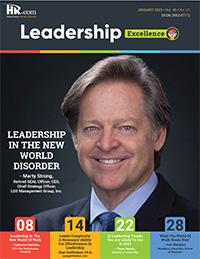
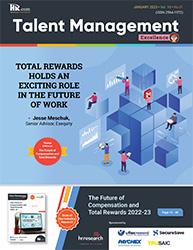
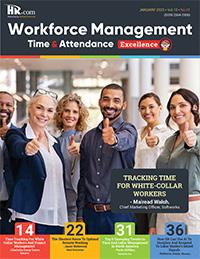
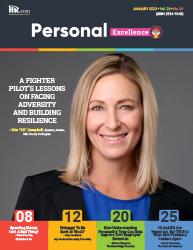
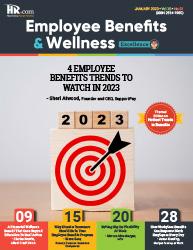
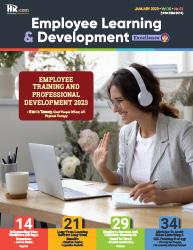
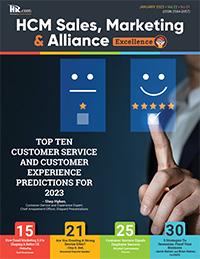
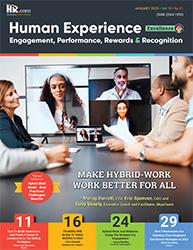
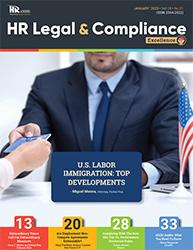

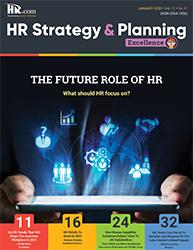
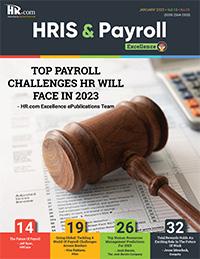
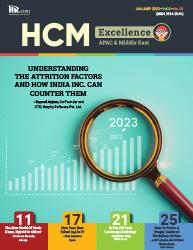
Like to submit an article? Use our online submission form or for more information go to www.hr.com/ExcellencePublications Publications 13 Targeted Publications to Reach Your Audience Informing, Educating, Enlightening and Assisting HR professionals in their personal and professional development, the Excellence series offers high-quality content through the publications!





 -
-

 - Lacey Leone McLaughlin, President, LLM Consulting Group, Inc
- Lacey Leone McLaughlin, President, LLM Consulting Group, Inc


















 Dave Ulrich
Rensis Likert Professor, Ross School of Business, University of Michigan Partner, The RBL Group
Julie Winkle Giulioni Author, Virtual /Live Keynote Presenter, Inc.’s Top 100 Leadership Speakers
Dr. Beverly Kaye CEO, BevKaye&Co.
Dave Ulrich
Rensis Likert Professor, Ross School of Business, University of Michigan Partner, The RBL Group
Julie Winkle Giulioni Author, Virtual /Live Keynote Presenter, Inc.’s Top 100 Leadership Speakers
Dr. Beverly Kaye CEO, BevKaye&Co.


 By Jim Stovall, Narrative Television Network
By Jim Stovall, Narrative Television Network







































